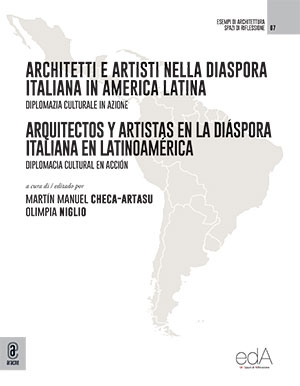DOI: 10.53136/979125994390311
Pages: 234-287
Publication date: September 2021
Publisher: Aracne
SSD:
ICAR/18
Modern architecture in Colombia is the result of the evolution from the colonial, republican and transition periods, and it created new iconic places in the cities mainly due to the arrival of new generations of Colombian and foreigner architects such as the Italian Bruno Violi (1909-1971). He proposed modern projects in different cities, this was the case of the city of San Juan de Pasto, the capital of the Nariño Department in the Colombian southwest. Around 1939, Violi designed the “Edificio Nacional de Pasto”, building that is located within the city’s historic center, one block south from the main square (Currently at the corner of 19th street with 23rd Carrera). His modern language was a pioneer in the city, and it hosted mail, telegraph, and jury offices. The architecture was simple but innovative, its symbolic character and type-morphologic change gave meaning to the modern and transition periods within their contexts. This is denominated the local historical urban landscape. Decades after its construction, maybe due a mistaken perspective on progress and lack of interest in modern architecture, the architectonic language of the “Edificio Nacional de Pasto” is transformed in the late 20th century with a facade renovation. Then, a jewel of the Colombian modern architecture was lost. In addition to that intervention, a new contemporary project was developed in the same block of the building, which contrasts the conception of the original design by Violi. This research paper highlights the value of modern heritage originated in the city of San Juan de Pasto through the former architectonic creation of Bruno Violi, and the later loss of modern architectural heritage in the city’s historic center due to the building transformation. This shows urban-architectonic fragmentation, and transformation of iconic places that were created during different historical layers, material footprints of our society.
Keywords: Modern architecture, Historic center, Architectural heritage.


